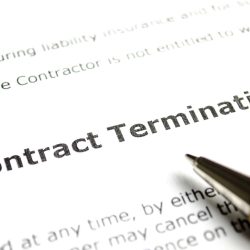With tax deadlines quickly approaching, your corporation has likely received a notice about filing its annual Delaware Franchise Tax. However, before filing, it is important to know that there are two methods of calculating this tax, one of which can potentially save your company thousands.
The two different methods that your business can use are the Authorized Shares Method and the Assumed Par Value Capital Method. The State of Delaware, by default, selects the Authorized Shares Method, which typically results in a much higher tax. Therefore, if your corporation’s franchise tax is higher than expected, it is recommended to recalculate the taxes using the Assumed Par Value Method. Since this method does have a higher likelihood of saving your corporation thousands in tax, the Assumed Par Value Method is the ideal choice for many businesses and startups.
Assumed Par Value Method:
The Assumed Par Value Method, while being the more complicated method of the two, will likely result in tax savings for your corporation. This method calculates the tax your company owes based on the following factors: (1) how many shares are authorized, (2) how many shares are issued, and (3) the amount of your company’s gross assets.
Delaware has adopted its own assumed par value, which is a company’s gross assets divided by all of its issued and outstanding shares. You can find your company’s gross assets by referencing the U.S. Form 1120, Schedule L tax form for the year that you are filing. However, if your company has not yet filed its taxes for that year, your company can utilize the gross asset value from the most recent balance sheet. It is important to note that this can later be amended when your company files its taxes.
Below is an example from Delaware’s website that demonstrates how to calculate the Assumed Par Value Method:
A corporation has 1,000,000 shares of stock with a par value of $1.00 and 250,000 shares of stock with a par value of $5.00, gross assets of $1,000,000.00, and issued shares totaling 485,000.
- Assumed par value = $1,000,000 assets divided by 485,000 issued shares = $2.061856 assumed par.
- There are 1,000,000 shares authorized with a par value of less than the assumed par value ($1 is less than $2.061856). So, $2.061856 assumed par value multiplied by 1,000,000 authorized shares = $2,061,856.
- There are 250,000 shares authorized with a par value greater than the assumed par value ($5.00 is greater than $2.061856). So, multiply $5.00 par value by 250,000 authorized shares = $1,250,000.
- Assumed par value capital = $2,061,856 plus $1,250,000 = $3,311 956 assumed par value capital.
- Round up to the next million = $4,000,000 assumed par value capital.
- Tax bill = $4,000,000 divided by 1,000,000 = 4 x $400 = $1,600.
It is crucial to note that this method will reduce your tax bill only if your company has issued at least 30% – 50% of the total authorized shares.
Another example that can be used for early-stage companies and startups is the following. Assume the corporation has 10,000,000 authorized shares of stock with a par value of $0.001. In this scenario, assume that the company has gross assets of $1,000,000 and has issued 6,000,000 shares
- Assumed par value = $1,000,000 assets divided by 6,000,000 issued shares = $0.166667 assumed par
- There are 10,000,000 shares authorized with a par value of less than the assumed par value ($0.001 is less than $0.166667). So, $0.166667 assumed par value multiplied by 10,000,000 authorized shares = $1,666,666.67.
- Round up to the next million = $2,000,000 assumed par value capital
- Tax bill = $2,000,000 divided by 1,000,000 = 2 x $400 = $800
However, if you are a smaller business whose tax bill is less than $400, the state of Delaware does require a minimum franchise tax payment of $400.
Next Steps:
Your corporation’s Delaware Franchise Tax is due every year by March 1st. When your company is ready to file, you can go to the Delaware Division of Corporations website. Some critical pieces of information that you will need for your filing are:
- Your corporation’s business entity file number;
- Your corporation’s EIN/FEIN, and
- Information about your corporation’s officers and board members such as their name, title, street address, etc.
Lastly, after selecting the year you would like to file, the next page will initially show your corporation’s taxes owed using the more expensive authorized share method. To calculate your taxes using the assumed par value method, enter the following information under Stock Information:
- Number of issued shares
- Gross assets
- The last day of the year for which you are filing taxes under Asset Date
If you’re interested in forming your own corporation or have questions regarding your corporation, contact us today! Schedule an appointment with us to have a free consultation.





